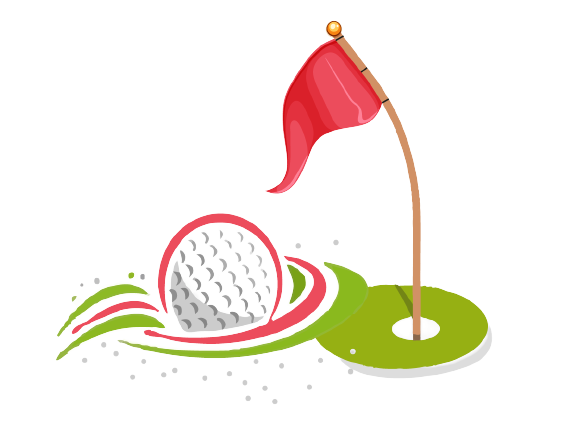Content Summary
Are you looking to improve your golf swing technique? Do you want to play like a PGA Tour Pro?
Look no further than the Stack and Tilt Golf Swing. This revolutionary approach was first introduced in the June 2007 issue of Golf Digest. It focuses on shoulder turn and spine inclination to achieve a powerful and consistent swing. In this article, I will guide you through the advantages and disadvantages of the Stack and Tilt Golf Swing and provide you with tips on how to master it effectively.
Key Takeaways:
- The Stack and Tilt Golf Swing is a revolutionary approach that emphasizes shoulder turn and spine inclination.
- It offers several advantages, including improved accuracy, consistency, and distance.
- To learn the Stack and Tilt Golf Swing effectively, focus on key elements such as weight distribution, shoulder turn, and spine inclination.
- Understanding the specific terminology of the Stack and Tilt Golf Swing is crucial for mastering the technique.
- While the method has its advantages, it may present challenges such as lower ball flight and potential stress on muscles and joints.
What is the Stack and Tilt Golf Swing?
The Stack and Tilt Golf Swing is a unique technique that emphasizes maintaining a stacked shoulder position above the hips and a tilted spine throughout the swing. Unlike the conventional golf swing, which focuses on factors like grip, posture, and ball position, the Stack and Tilt Swing prioritizes weight distribution, shoulder turn, and spine inclination to generate power and consistency.

Note: We use affiliate links and may receive a small commission on purchases at no additional cost to you.
By maintaining a stacked shoulder position above the hips, golfers can achieve better body rotation, which promotes a more efficient transfer of energy through the swing. The tilted spine adds to the power and speed by creating a strong and stable foundation. This technique enhances the golf swing mechanics and promotes a more efficient golf swing plane, resulting in improved ball contact, accuracy, and distance. With the Stack and Tilt Golf Swing, golfers can achieve a consistent and repeatable swing, making it easier to develop muscle memory and ensure a solid performance on the course. This technique has gained popularity among golfers of all levels, from amateurs to professionals, for its potential to improve overall golf performance. The Stack and Tilt Golf Swing offers golfers a unique approach to the game, providing a solid foundation for power, consistency, and improved swing mechanics. In the next section, we will explore the advantages of the Stack and Tilt Golf Swing and how it can benefit your golf game. The Stack and Tilt Golf Swing offers a range of benefits that can enhance your overall performance on the course. By maintaining a stacked shoulder position and a tilted spine throughout the swing, you can unlock improved accuracy, consistency, and distance in your shots. Let's explore the advantages in more detail: Overall, the advantages of the Stack and Tilt Golf Swing make it an appealing technique for golfers looking to improve their game. Whether you're seeking greater accuracy, consistency, power, or improved short game performance, this method can help you achieve your goals. Consider incorporating the Stack and Tilt technique into your practice routine and experience the benefits firsthand. To effectively learn the Stack and Tilt Golf Swing, it is important to focus on key elements such as weight distribution, shoulder turn, and spine inclination. By mastering these fundamentals, you can achieve a consistent and powerful swing. Here are some tips and drills to help you on your journey to mastering the Stack and Tilt Golf Swing. One of the key principles of the Stack and Tilt Golf Swing is proper weight distribution. To achieve this, focus on keeping your weight forward throughout the swing. Start by positioning more weight on your front foot at address and maintain that distribution throughout the swing. Practice hitting shots with a slight forward press to train your body to maintain the proper weight distribution. The Stack and Tilt Golf Swing emphasizes a powerful shoulder turn to generate maximum power and consistency. Make sure you turn your shoulders fully on the backswing while maintaining your spine inclination. Visualize a tight coil in your backswing, and unleash that energy through impact. Practice drills that focus on a full shoulder turn, such as the "shoulder turn drill" where you rotate your shoulders as far as you can without moving your lower body. Another important element of the Stack and Tilt Golf Swing is maintaining a tilted spine throughout the swing. This tilt helps create the stacked shoulder position and encourages a more efficient transfer of energy. Practice drills that focus on maintaining your spine inclination, such as the "spine tilt drill" where you place a golf club along your spine and work on tilting your upper body toward the target. Practice drills are a great way to develop the muscle memory needed for consistent execution of the Stack and Tilt Golf Swing. Incorporate drills that target specific aspects of the swing, such as weight distribution, shoulder turn, and spine inclination. For example, the "alignment drill" helps you align your body correctly to maintain the proper stack and tilt position. Establishing a pre-swing routine can help you prepare both mentally and physically for each shot. Develop a routine that incorporates elements like alignment checks, practice swings, and visualization. This will help you establish a consistent setup and mindset before executing the Stack and Tilt Golf Swing. If you're serious about mastering the Stack and Tilt Golf Swing, consider investing in the Stack Tilt Collection. This collection includes instructional DVDs from the inventors of the swing, Andy Plummer and Mike Bennett. These DVDs provide comprehensive guidance, drills, and tips to help you understand and perfect the Stack and Tilt technique. The Stack and Tilt Golf Swing involves specific terminology that is essential to understand and apply correctly to master this unique technique. Let's explore the key terms used in the Stack and Tilt Golf Swing: The shoulder stack is a fundamental concept in the Stack and Tilt Golf Swing. It refers to the positioning of the shoulders directly above the hips, creating a stable and balanced base for the swing. By maintaining the shoulder stack throughout the swing, golfers can achieve a more consistent and powerful strike. The spine tilt is another crucial component of the Stack and Tilt Golf Swing. It involves leaning the spine towards the target, creating an angle that promotes increased power and speed in the swing. The proper application of spine tilt helps golfers generate maximum clubhead speed and achieve optimal ball flight. Understanding and effectively implementing these terms is vital for mastering the Stack and Tilt Golf Swing. By maintaining the shoulder stack and utilizing appropriate spine tilt, golfers can unlock the full potential of this technique and improve their swing mechanics and swing plane. Unlike the conventional swing, which emphasizes factors like grip, posture, and ball position, the Stack and Tilt technique prioritizes consistent ball contact and proper weight distribution. By maintaining a stacked shoulder position and a tilted spine throughout the swing, golfers can achieve improved accuracy, distance, and overall swing consistency. In the conventional swing, golfers often focus on the grip, which is how they hold the club, and posture, which involves the body's alignment and positioning. These factors play a crucial role in the setup and execution of the swing, aiming to provide stability and control. On the other hand, the Stack and Tilt Golf Swing places less emphasis on the grip and posture, instead focusing on achieving a specific shoulder position and spine tilt. By maintaining a stacked shoulder position above the hips, golfers can create a stable base for their swing and promote a more efficient transfer of energy. Furthermore, the tilted spine in the Stack and Tilt technique helps generate power and speed, contributing to increased distance and accuracy. This unique approach to golf swing mechanics allows golfers to achieve a more consistent and repeatable swing, leading to improved performance on the course. When comparing the Stack and Tilt Golf Swing to the conventional swing, it is important to note that both techniques have their merits. The conventional swing's focus on grip and posture provides a solid foundation for many golfers, while the Stack and Tilt technique offers a unique approach that prioritizes consistent ball contact and weight distribution. Ultimately, the choice between these two approaches depends on the individual golfer's preferences and goals. Some golfers may find success and improvement through the Stack and Tilt Golf Swing, while others may prefer the traditional approach. Golfers need to experiment, practice, and find what works best for their game. The Stack and Tilt Golf Swing is an excellent choice for beginner golfers looking to improve their game. This swing technique offers simplified mechanics that are easier to grasp compared to traditional methods. The reduced emphasis on factors like grip, posture, and ball position allows beginners to focus on mastering fundamental aspects of the swing, such as alignment, weight distribution, shoulder rotation, and spine angle. When learning the Stack and Tilt as a beginner, it's crucial to seek guidance from professional instructors or take golf lessons. These lessons will provide you with the necessary knowledge and techniques to execute the swing correctly from the start. By receiving proper instruction, you can avoid developing bad habits and ensure a solid foundation for your golf game. Along with professional guidance, club selection plays a crucial role in learning the Stack and Tilt as a beginner. It's essential to choose clubs that are suited to your swing mechanics and skill level. Working with a knowledgeable club fitter can help you find the right equipment that complements your Stack and Tilt swing. Practice drills are also essential for beginners to develop muscle memory and build consistency in their swing. A variety of drills can aid in improving key elements of the Stack and Tilt technique, such as maintaining a stacked shoulder position and a proper spine tilt. Regular practice and repetition of these drills will help you solidify your swing mechanics and see progress in your game. Physical fitness and conditioning are crucial when learning the Stack and Tilt as a beginner. This swing technique requires stability, strength, and flexibility, particularly in the lower body. Incorporating exercises that target these areas, such as squats, lunges, core work, and rotational exercises, can greatly enhance your ability to perform the Stack and Tilt swing effectively. It's essential to consult with a fitness professional or a golf-specific trainer to develop a well-rounded conditioning program that addresses the specific needs of the Stack and Tilt swing. By focusing on physical conditioning, you'll not only improve your swing mechanics but also reduce the risk of injury and enhance overall performance on the golf course. As a beginner golfer, the Stack and Tilt Golf Swing offers a simplified approach to swing mechanics, allowing you to focus on fundamental elements without overwhelming complexity. Seek professional instruction, choose suitable clubs, incorporate practice drills, and prioritize physical conditioning to maximize your learning and progress with the Stack and Tilt method. Embrace the opportunity to improve your game and enjoy the journey towards becoming a confident and proficient golfer. The Stack and Tilt Golf Swing technique is not just limited to full swings; it can also greatly enhance your short-game skills. By incorporating this swing technique into your chipping, putting, wedge play, and pitches, you can improve your scoring ability, enhance consistency, and unlock shot-making creativity. When it comes to the short game, club selection is crucial. With the Stack and Tilt method, you can make more precise club choices based on your strengths and weaknesses. The technique's emphasis on consistent ball contact and alignment will contribute to better accuracy and control around the greens. Practice routines play a vital role in refining your short-game skills. By including the Stack and Tilt Golf Swing in your practice sessions, you can develop muscle memory and improve the execution of this technique in various short-game scenarios. Focus on replicating the swing sequence while adapting to different club selections and shot distances. Furthermore, the mental approach is a key component in mastering the Stack and Tilt method in the short game. Visualize the desired shot trajectory and have confidence in your ability to execute it. Embrace the unique aspects of the Stack and Tilt technique, such as the stacked shoulder position and tilted spine, as you work on your short-game shots. Overall, the Stack and Tilt Golf Swing can revolutionize your short game, allowing you to approach chipping, putting, wedge play, and pitches with increased precision, consistency, and creativity. Take a look at the table below to see how the Stack and Tilt Golf Swing can enhance your short-game skills: By applying the Stack and Tilt Golf Swing to your short game, you can elevate your performance around the greens and see noticeable improvements in your scoring ability and overall game. While the Stack and Tilt Golf Swing offers several advantages, it is not without its challenges. Golfers should be aware of the potential drawbacks associated with this technique. Some of the main challenges include: One challenge that golfers may face when using the Stack and Tilt Golf Swing is achieving a higher trajectory with longer irons. The method's emphasis on shoulder stack and spine tilt can result in a lower ball flight, making it more difficult to get the ball airborne with clubs such as 3-iron or 4-iron. The Stack and Tilt Golf Swing requires a different weight distribution and less weight transfer compared to a conventional swing. While this technique can provide benefits in terms of consistency and accuracy, it may potentially lead to a slight power loss. Golfers may need to make adjustments to generate optimal clubhead speed and power. The Stack and Tilt Golf Swing involves maintaining a stacked shoulder position and a tilted spine throughout the swing. This can sometimes lead to balance issues, especially for golfers who are new to the technique. Proper footwork and weight distribution are crucial to maintaining stability throughout the swing. The additional movements and positions required by the Stack and Tilt Golf Swing may put stress on certain muscles and joints, especially if executed incorrectly or without proper conditioning. Golfers should be mindful of their body's limitations and take necessary precautions to prevent any potential injuries. While these challenges exist, they can be overcome with practice, coaching, and a thorough understanding of the Stack and Tilt technique. By addressing these potential drawbacks, golfers can fully exploit the benefits of this unique swing method. As golfers consider adopting the Stack and Tilt Golf Swing, it is essential to evaluate its pros and cons. The technique has gained popularity among some tour pros due to its benefits in terms of increased accuracy and consistency. Despite its advantages, the Stack and Tilt method does present challenges. Senior golfers, for example, may find it difficult to adapt to the specific movements required by the technique. Additionally, the lack of weight transfer in the swing may lead to a potential loss of power. To determine if the Stack and Tilt Golf Swing is right for you, it is crucial to consider your individual needs, goals, and physical capabilities. The Stack and Tilt Golf Swing offers golfers a unique and effective approach to improving their game. By focusing on maintaining a stacked shoulder position and a tilted spine throughout the swing, golfers can experience enhanced accuracy, consistency, and distance. While this technique may not be suitable for every golfer, those who are willing to invest the time and effort to learn and practice the Stack and Tilt Golf Swing can expect to see significant improvements in their overall performance on the course. Whether you are a beginner looking to develop a solid foundation or an experienced golfer seeking to refine your skills, exploring the Stack and Tilt Golf Swing is highly recommended. By incorporating the principles of this technique into your game, you can unlock new levels of power and precision. In summary, the Stack and Tilt Golf Swing has the potential to transform your golfing experience. It is a method that emphasizes proper weight distribution, shoulder turn, and spine inclination to maximize energy transfer and generate impressive results. So, if you're ready to take your game to the next level, give the Stack and Tilt Golf Swing a try and see the difference it can make in your performance on the course. While golfers such as Aaron Baddeley, Charlie Wi, Grant Waite, and Mike Weir utilize clear Stack and Tilt swings, many other professional players incorporate fundamental aspects of this swing theory into their techniques. The stack and tilt golf swing is a modern golf swing technique that emphasizes keeping your weight forward and centering the swing around a steady spine tilt throughout the swing. Unlike traditional swings that emphasize weight shift away from the target, the stack and tilt swing focuses on maintaining weight forward and a consistent tilt, leading to more solid ball striking. The key elements include keeping the weight centered, maintaining a steady spine tilt, and rotating around the spine, leading to a more efficient and consistent swing. The stack and tilt technique promotes a centered backswing with an emphasis on keeping the upper body over the lower body, leading to a more controlled and powerful backswing. In the downswing, the stack and tilt method encourages a forward weight shift and a shallower swing plane, resulting in improved club delivery at impact and more consistent ball striking. By promoting a forward weight transfer and a consistent tilt, the stack and tilt method enables golfers to make solid and consistent contact with the ball, leading to improved ball striking. While stack and tilt may require some adjustments, it can be effective for golfers of various skill levels, particularly those looking to achieve more consistency in their swings. Yes, the stack and tilt method often advocates for a more forward ball position to accommodate the centered weight and tilt, allowing for better contact with the ball. The stack and tilt method encourages a forward weight shift by focusing on keeping the weight centered and the body tilted forward during the downswing, promoting a more powerful and controlled swing. You can find detailed instructions and analysis of the stack and tilt technique from golf instructors and through various golf instructional resources, including videos and coaching materials. Thank you for visiting, and we hope to see you back soon!The Key Components of the Stack and Tilt Golf Swing
Advantages of the Stack and Tilt Golf Swing
How to Learn the Stack and Tilt Golf Swing
1. Work on Your Weight Distribution
2. Perfect Your Shoulder Turn
3. Enhance Your Spine Inclination
4. Utilize Practice Drills
5. Pre-Swing Routines
6. The Stack Tilt Collection
Sample Stack and Tilt Golf Swing Drills
Drill
Description
Alignment Drill
Place alignment sticks on the ground to ensure proper positioning and alignment at address.
Shoulder Turn Drill
Focus on rotating your shoulders as far as possible while maintaining your stack and tilt position.
Spine Tilt Drill
Use a golf club along your spine to practice maintaining the proper tilt throughout the swing.
Weight Transfer Drill
Work on shifting your weight correctly from back foot to front foot during the downswing.
Impact Position Drill
Focus on achieving the correct impact position with forward shaft lean and hands ahead of the ball.
The Terminology of the Stack and Tilt Golf Swing
1. Shoulder Stack
2. Spine Tilt
Term
Definition
Shoulder Stack
The positioning of the shoulders directly above the hips to create a stable base for the swing.
Spine Tilt
Leaning the spine towards the target to generate power and speed in the swing.
Comparing the Stack and Tilt to the Conventional Golf Swing
S&T Golf Swing Comparison:
Stack and Tilt Golf Swing
Conventional Golf Swing
Description
Less emphasis on grip
More emphasis on grip
Description
Less emphasis on posture
More emphasis on posture
Learning the Stack and Tilt as a Beginner
The Perfect Swing for Beginner Golfers
Club Selection and Practice Drills
Physical Conditioning for the Stack and Tilt
In Summary
Enhancing Short-Game Skills with the Stack and Tilt Golf Swing
Short Game Skills
Benefits of the Stack and Tilt Golf Swing
Chipping
Improved ball contact, accuracy, and control.
Putting
Enhanced consistency in stroke mechanics and alignment.
Wedge Play
Increased control over trajectory, spin, and distance.
Pitches
Improved shot-making creativity and accuracy from various distances.
The Drawbacks of the Stack and Tilt Golf Swing
Lower Ball Flight with Long Irons
Power Loss
Balance Issues
Potential Stress on Muscles and Joints
Evaluating the Stack and Tilt Golf Swing
Pros of the Stack and Tilt Golf Swing:
Cons of the Stack and Tilt Golf Swing:
Pros of the Stack and Tilt Golf Swing Method
Conclusion
Stack & Tilt - FAQ's
Are there any pros that use the stack and tilt?
What is the stack and tilt golf swing?
How does the stack and tilt swing differ from traditional golf swings?
What are the key elements of the stack and tilt golf swing?
How does the stack and tilt technique impact the backswing?
What changes can be observed in the downswing with the stack and tilt swing?
How does the stack and tilt approach affect hitting the ball?
Is stack and tilt suitable for golfers of all skill levels?
Are there any specific ball position requirements with the stack and tilt technique?
How does the stack and tilt swing encourage a weight shift during the swing?
Where can I learn more about the stack and tilt golf swing?






